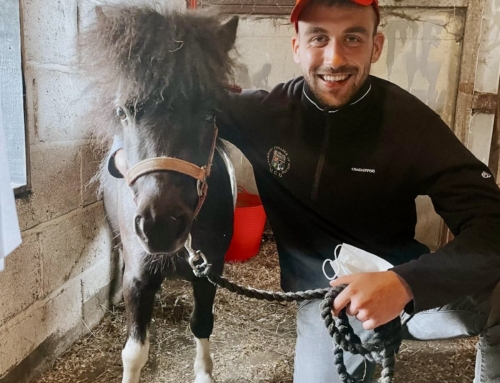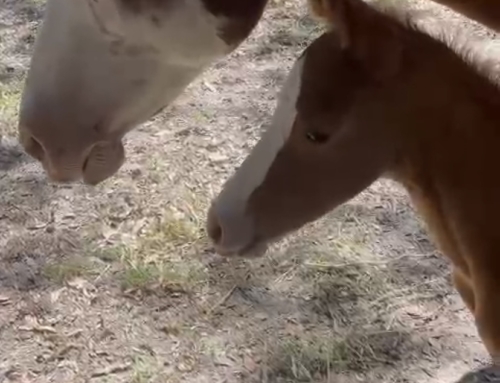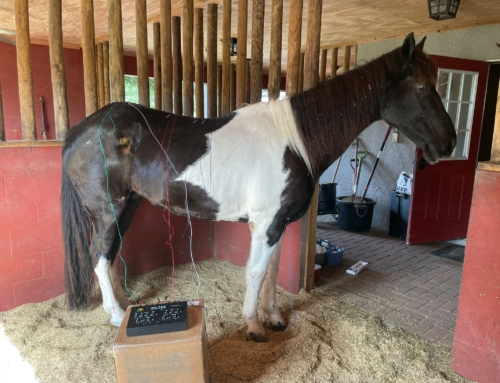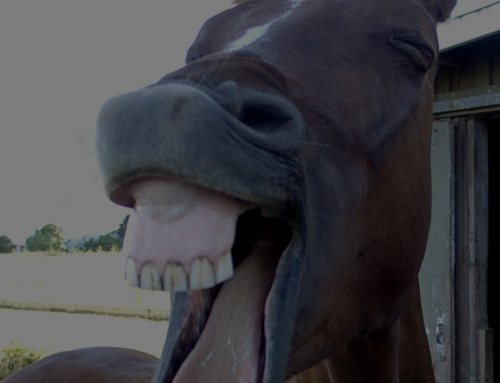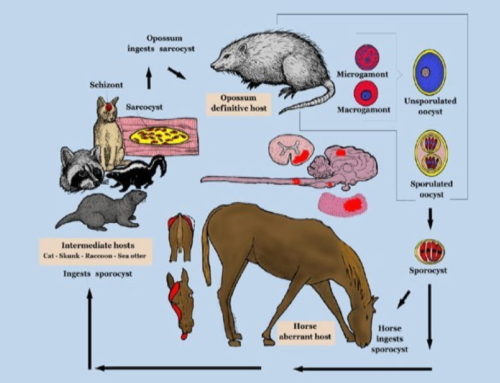Regenerative Therapies – IRAP
Degenerative joint disease, commonly known as osteoarthritis, is a widespread problem with equine athletes. Degenerative joint disease first starts with the initiation of an inflammatory cascade. The inflammatory response is the body’s nature defense mechanism to protect itself from infection and injury. This allows the body to localize and eliminate the injurious cause and remove damaged tissue so that the body can begin to heal. When there is repeated joint stress or issues, this can lead to the start of the destructive inflammation cascade.
The inflammatory cascade is initiated by the release of cytokines. Cytokines are proteins, which act like messengers to allow the cells to communicate. Cytokines are especially important in influencing the strength and target of inflammatory/immune response. When a horse experiences joint discomfort, pain or stiffness, this leads to cytokines being released. The cytokines send messages to increase the vascularity (blood supply) in the affected joint. This
increased blood supply then allows more cytokines to access the affected joint, leading to more inflammation in the area. Eventually, the body sends bone tissue and cartilage repair elements to the joint. The inflammation already in the region changes the body’s ability to perform proper repair. This eventually leads to bone spurs or hard bone build-up, which damages the already weakened and inflamed cartilage. Additional damage to the bone and cartilage occurs through continued use of the poorly repaired site. This inflammation builds further, and the destructive inflammation cascade continues: cytokine release, inflammation, poor repair, continued movement, additional damage, cytokine release, inflammation and so on. Ultimately, the horse develops arthritis. Often, these initial detrimental changes are insidious, and it is not until obvious lameness develops that the presence of degenerative joint disease is noticed. Managing this inflammation cascade is essential to reducing pain and effectively repairing the affected joint.
Traditionally, the most common treatment for degenerative joint disease was intra-articular corticosteroids. Horses show an immediate improvement after intra-articular corticosteroids, and this gradually wears off over a period of time. However, studies have shown that with repeated corticosteroid treatment, there is a shorter duration of therapeutic effect. In addition, corticosteroids have been proven to slow cartilage production over time.
In recent years, Interleukin-1 Receptor Antagonist Protein (IRAP) is an autologous (cells from same individual) conditioned serum which has become revolutionary in treating degenerative joint disease. IRAP was developed to neutralize the IL-1, a major cytokine utilized in the inflammatory cascade. When this cytokine is neutralized, it slows the progression of osteoarthritis. IRAP works by preventing IL-1 from actually binding to its receptors via an antagonist protein. This prevents the damage and inflammation caused by IL-1. Studies have shown that after treatment with IRAP, horses exhibit reduced lameness, improved joint histology, and cartilage preservation. Clinically, this improves lameness, range of motion and effusion in the treated joint.
IRAP is collected by drawing your horse’s blood in a specialized syringe, which activates the production of the antagonist protein. The blood is incubated in the syringe for 24 hours, and then placed in a centrifuge where the serum is separated from the blood cells. This serum contains the antagonist protein. Samples can be stored in the freezer until use. IRAP is injected into the affected joint for 3-5 treatments. Rest is recommended for 4-7 days after intra-articular injection. After injection, IRAP stimulates a regenerative response, by increasing cell recruitment and cell division. IRAP also contains anti-inflammatory mediators, which act to reduce inflammation within the joint.
Horses most likely to respond well to IRAP are those with mild osteoarthritis or joint inflammation. IRAP cannot change any permanent damage/changes within the joint, but can slow the progression of the degenerative process and inflammation within the joint.
View our IRAP information video by clicking the link and if you have any questions or would like to book your IRAP appointment, please contact us.


